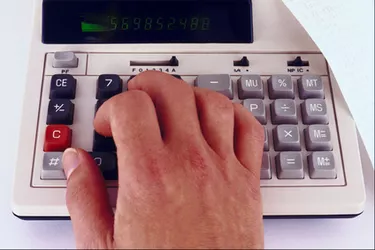
The average rate of return is an investing concept that shows how much an investment made over the investment's life. The formula averages the return on a per year basis. It is important for investors to calculate their average return so they can make better comparisons between the returns of different investments.
Step 1
Determine the investment's original cost and the selling price of the investment. For example, a person purchases 100 shares of stock on January 1, 2005 for $40 each, then sells all 100 shares on December 31, 2009 for $65 a share. His original cost is $4,000 and his selling price is $6,500.
Video of the Day
Step 2
Determine the rate of return on the investment by dividing the gain (the difference between the selling price and the original cost) by the original cost. In our example, $1,500 divided by $4,000 equals a return of 37.5 percent.
Step 3
Determine the number of years the investor kept the investment. In our example, the investor held the stock for five years.
Step 4
Divide the rate of return by the number of years the investor held the shares to calculate the average rate of return. In our example, 37.5 percent divided by 5 years equals 7.5 percent per year.
Video of the Day